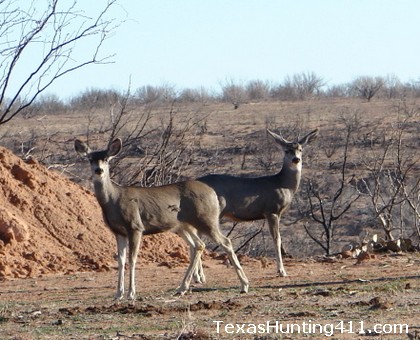Chronic wasting disease (CWD) is a deer disease that nobody wants, but state agencies are obligated to monitor for the sake of wildlife populations and hunters alike. CWD was discovered in Texas just over two years ago limited to the northern part of the Trans-Pecos, but has it spread since then? Texas Parks and Wildlife Department (TPWD) recently released the results from their sampling efforts for the 2014-15 hunting season. CWD was detected in one of 222 tissue samples that were collected from hunter harvested mule deer and elk from the Trans Pecos.
“Without the hunter check stations and the strong cooperation of hunters and landowners, we would know very little about the prevalence of the disease or where it exists,” said Mitch Lockwood, Big Game Program Director with TPWD. Also included in the sampling effort last season, 143 mule deer and elk brought to check stations were tested for bovine tuberculosis as part of a cooperative effort between TPWD and Texas Animal Health Commission to monitor for bovine tuberculosis. No positives were found.

To date, 839 deer and elk have been tested through the CWD check stations and strategic sampling that occurred during the summer of 2012; 282 were in the Containment Zone, 205 were in the adjacent High Risk Zone, 117 were in the Buffer Zone, and 235 were outside of the CWD zones. The disease has been detected in only 7 animals, all within the Hueco Mountain area, indicating a disease prevalence of 10–15 percent within that population.
“Additional sampling is necessary to develop more confidence in the geographic extent and prevalence of the disease, but the fact that CWD has not been detected in Texas outside of the Hueco Mountain area of northern El Paso and Hudspeth counties is encouraging,” said Lockwood.
CWD is a member of the group of diseases called transmissible spongiform encephalopathies (TSEs). Other diseases in this group include scrapie in sheep, bovine spongiform encephalopathy (BSE or mad cow disease) in cattle, and Cruetzfeldt-Jakob disease in humans. CWD among cervids is a progressive, fatal disease that commonly results in altered behavior as a result of microscopic changes made to the brain of affected animals. An animal may carry the disease for years without outward indication, but in the latter stages, signs may include listlessness, lowering of the head, weight loss, repetitive walking in set patterns, and a lack of responsiveness. CWD is not known to affect humans or livestock.
There is no vaccine or cure for CWD, but steps have been taken to minimize the risk of the disease spreading from beyond the area where it currently exists. The Texas Parks and Wildlife and Texas Animal Health commissions adopted rules to restrict movement of deer, elk, and other susceptible species within or from the CWD Zones as well increase surveillance efforts.
More details about CWD and the 2014-15 findings can be found online.